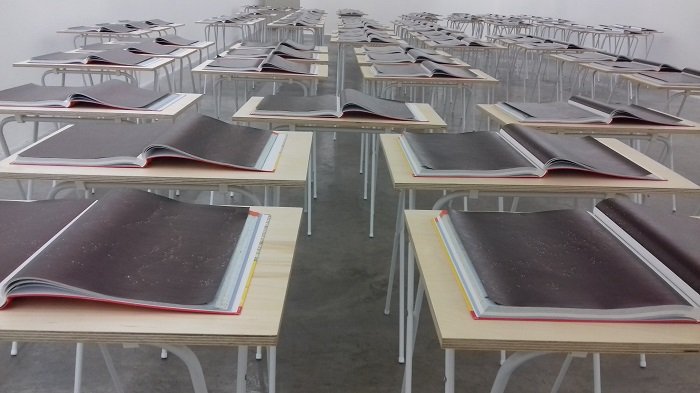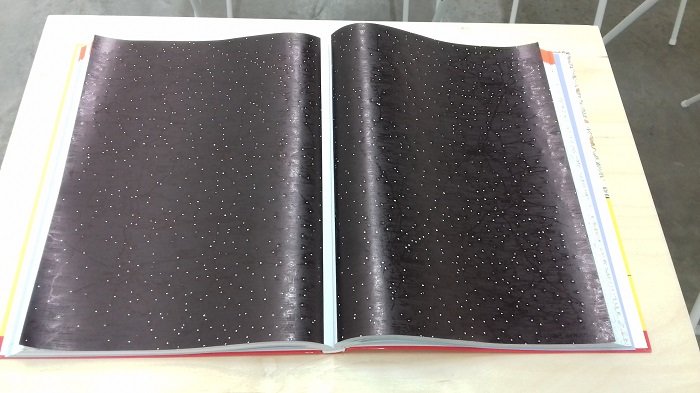Exhibition Review | Atlas by Kathy Prendergast
Kathy Prendergast was educated in NCAD, Dublin and RCA London. An artist of quiet but immense sophistication Prendergast’s work has persistently revolved around a potent cluster of issues chief among which are sexuality, identity, landscape, mapping and power. She came to widespread attention for her monumental project City Drawings, for which she won the Best Young Artist Award at the Venice Biennale 1995. During a time when borders, migration and nationalism are firmly within the public mind, Prendergast’s work is as relevant and poignant as ever, proven with her latest exhibition Atlas (2016).
Currently on display in the Kerlin Gallery until 10th December, this powerful piece confronts the viewer with one hundred desks, each with a page of the AA road map displaying a section of Europe. These maps have been blanked out with Indian black ink, with only points of habitation, such as cities and towns, painstakingly marked by white dots. The tables are then arranged to mimic a basic shape of Europe. The result is quite beautiful – like a strange starry sky – and the fun of exploring each desk to potentially find your own home would draw even the strongest sceptics in. However, the piece is more than an aesthetic exercise. Prendergast removes borders and makes the face of Europe almost featureless, posing a question over division and difference within this continent.

By focusing on cities and towns, Prendergast has continued a theme that is present throughout her work, allowing these locations to take centre stage as the primary site of human activity, inhabitation and even identity. This passes over the common conception of the nation-state as the first and foremost important aspect when marking out Europe.
Prendergast has been much quoted saying that ‘maps are subjective’ and it is in this work that this statement is brought to the fore. The wooden desks lined up in formation give an impression of a classroom. This presentation of the maps contributes to the emphasis of subjectivity and how geography is taught and learned within a certain ideological and political framework – contributing to an increase of ‘imaginary’ borders between people, even beyond those of the nation-state.
The piece, like many of Prendergast’s works can be interpreted in many ways. Is it a statement on open borders in the face of migration and dispute? Or simply a comment on how borders themselves are human constructs rather than true geographical entities? To say that this work is a direct comment on the political division that is taking place across Europe and the anti-immigration stance many countries have taken would be misrepresentation. However, the viewer can easily make the link between it and the present day conflicts across borders and national identity. Due to this lack of direct reference however, it gives the work a timeless quality allowing the viewer to step back and look at the formations of settlements and the nature of changing borders throughout history, further emphasising the constructed nature of those borders and nation-state.

Prendergast’s ability to provoke thoughtful reflection and response on difficult and complex topics in a multi-layered fashion is astounding and may change the way you look at maps in the future. From an early stage in her career she has explored the nature of presentation of the world, and this piece shows a great maturity but with the same high detail and attention to presentation for which Prendergast is well known. It has been nine years since the Kerlin Gallery has hosted Prendergast but this is a strong and memorable reintroduction into this gallery space.
